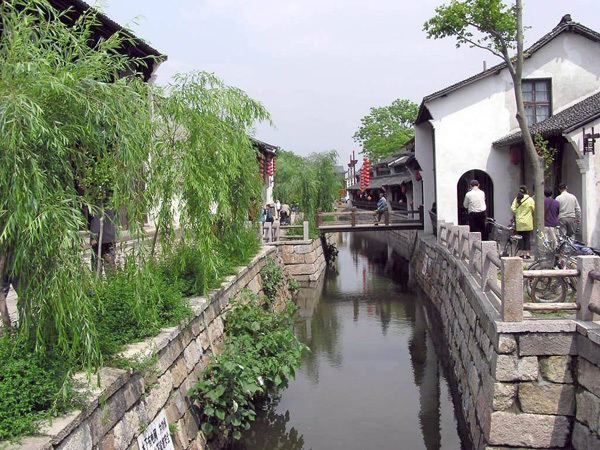Country China Time zone China Standard (UTC+8) Province Zhejiang | Prefecture-level city Jiaxing Area 700.5 km² Local time Wednesday 3:59 AM | |
 | ||
Weather 4°C, Wind N at 6 km/h, 75% Humidity Points of interest Guanchao Shengdi Park, Zaixiangfu Di Fengqing, Xu Zhimomu, Yanguan Scenic Attraction, Wangguowei Former Residence | ||
Haining (Chinese: 海宁市; pinyin: Hǎiníng shì) is a county-level city in Zhejiang Province, China, and under the jurisdiction of Jiaxing. It is in the south side of Yangtze River Delta, and in the north of Zhejiang. It is 125 kilometers west of Shanghai, and 61.5 kilometers east of Hangzhou, the capital of the province. To its south lies the Qiantang River. The city has a land area of 700.5 sq. kilometers and at the 2010 census, had a population of 806,966 inhabitants even though its built-up (or metro) area is smaller. Haining is known for its leather industry and spectacular tide in the Qiantang River.
Contents
- Map of Haining Jiaxing Zhejiang China
- Administration divisions
- History
- Culture
- Commerce and Pollution
- Transportation and Weather
- People from Haining
- References
Map of Haining, Jiaxing, Zhejiang, China
Administration divisions
Haining consists of 4 administrative districts and 8 towns.
History
In May 1949 Haining was occupied by the Communist Army, and Haining County was formed, which belonged to Jiaxing Region. In June 1949 the county government was relocated to Xiashi Town. In October 1958 Haiyan County was merged into Haining. In December 1961 Haiyan County was re-established. In November 1986 Haining County was elevated to Haining City, under jurisdiction of Jiaxing. In history, Yanguan Town had long served as the seat of county government. During Sino-Japanese War, the county seat was moved to Yuanhua Town and even outside the county. After the war, the county government was formed in Xiashi Town.
Culture
Haining is famous for its leather-silhouette show (also known as shadow play),colored lanterns, and tidal bore viewing. Haining began to be inhabited as early as the New Stone Age some 6,000 years ago. During the Spring and Autumn period (770-476BC), it became part of the State of the Wu and then belonged to the State of the Yue before coming under the State of the Chu. In 221BC, during the Qin Dynasty, it fell under the jurisdiction of Changshui County (present-day Jiaxing). In 223AD, or the second year of the reign of Wu State King Huangwu of the Three Kingdoms period, it became known as Yanguan County. In 1295, or the first year of the reign of Yuan Emperor Yuanzheng, the county was promoted to be Yuanguan Prefecture. It became Haining Prefecture in 558. As the sea often invaded the prefecture via the Qiantangjiang River, the area was renamed Haining Prefecture in 1329 in the hope of calming the waves (in Chinese, “hai” means sea and “ning” calming down), and it remains so today. Following the founding the PRC, the area became Haining County, which was turned into Haining City in November 1986 with the approval of the State Council.
Commerce and Pollution
Haining has developed as a city well known for its quality leather products. Zhejiang Jinko Solar Co., Ltd., founded in 2006 as a subsidiary of Hong Kong-invested JinkoSolar Holding Co, Ltd (NYSE Stock Code: JKS), produces solar panel photovoltaic cells and wafers. It employs more than 10,000 professionals in two factories in east China and has offshore offices and warehouse in the United States and Europe, according to the company website (www.jinkosolar.com). On Thursday, 15 September 2011, more than 500 people from Hongxiao Village protested over the large-scale death of fish in a nearby river. Angry protesters stormed the factory compound, overturned eight company vehicles, and destroyed the offices before police came to disperse the crowd. Protests continued on the two following nights with reports of scuffle, officials said. Chen Hongming, a deputy head of Haining's environmental protection bureau, said the factory's waste disposal had failed the pollution tests since April. The environmental watchdog has warned the factory but it had not effectively controlled the pollution, Chen added.
Transportation and Weather
Haining was positioned on the center line of the total solar eclipse on Wednesday, July 22, 2009. For the event, the local weather was mostly cloudy, but substantial viewers were on hand to witness it.
